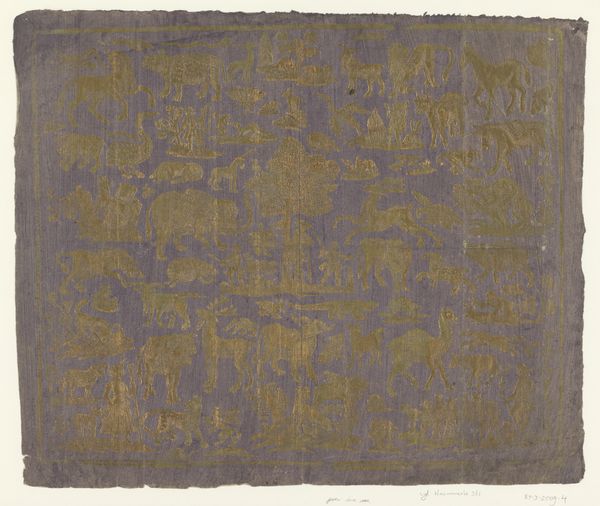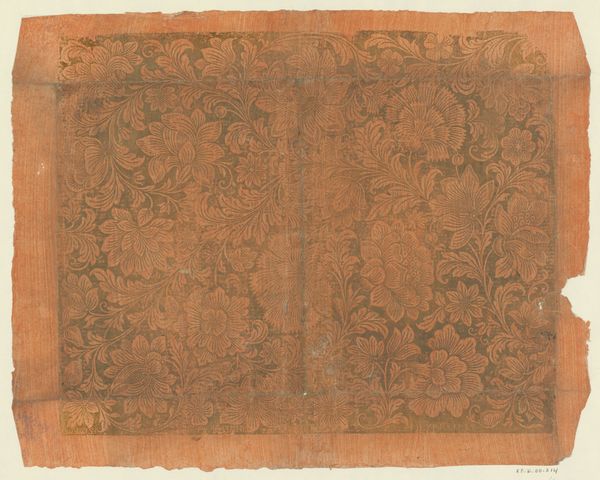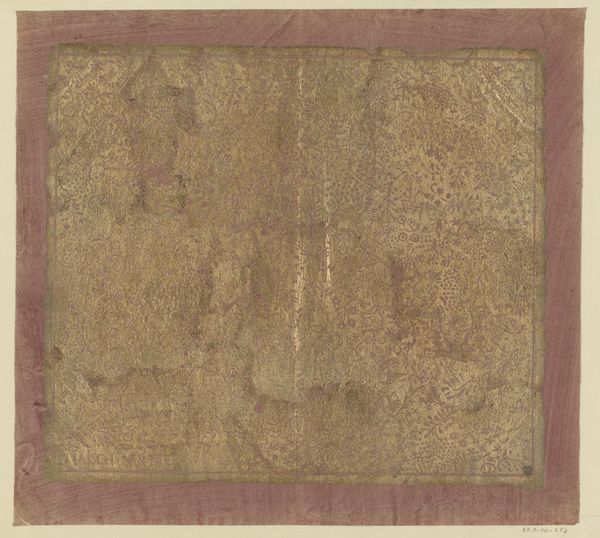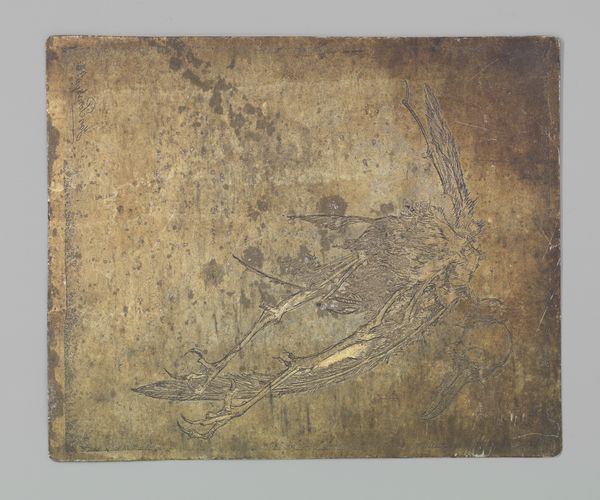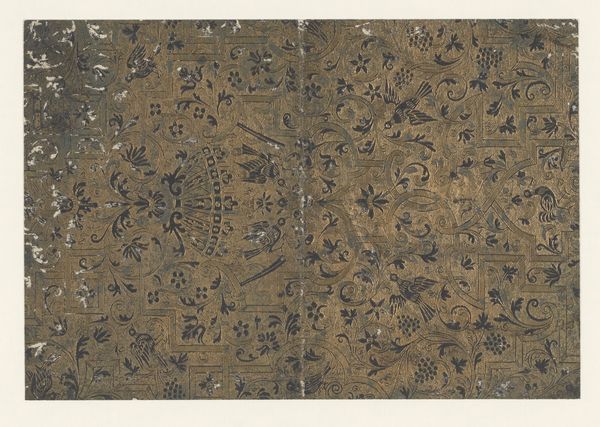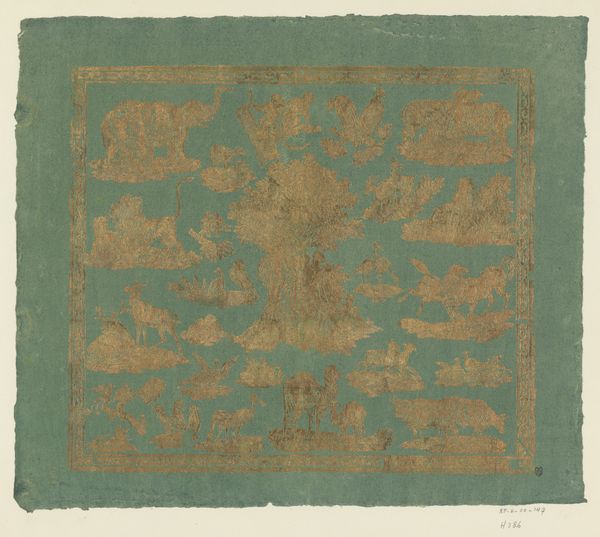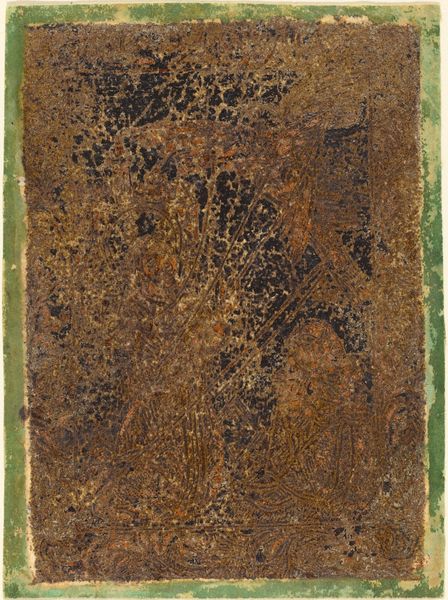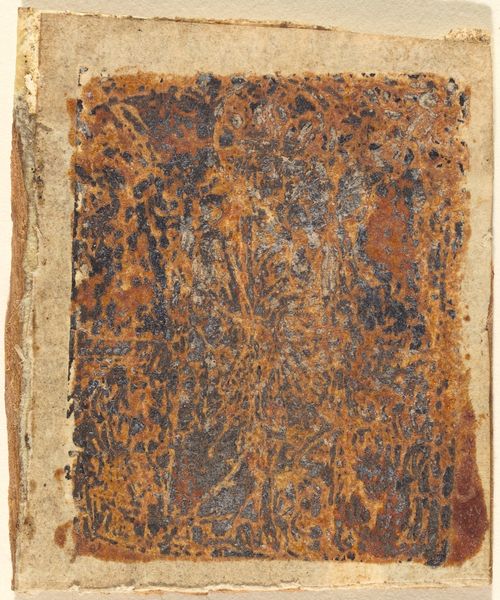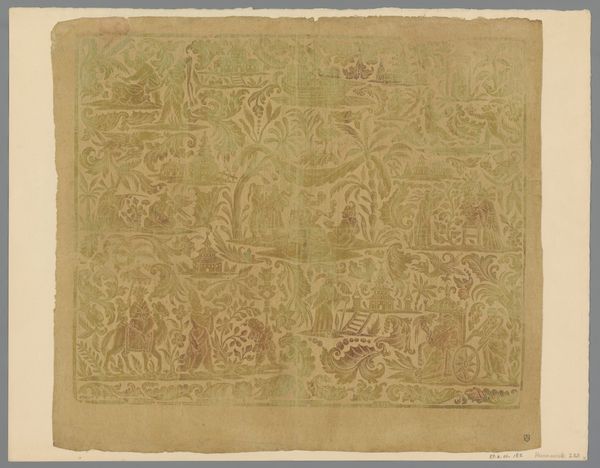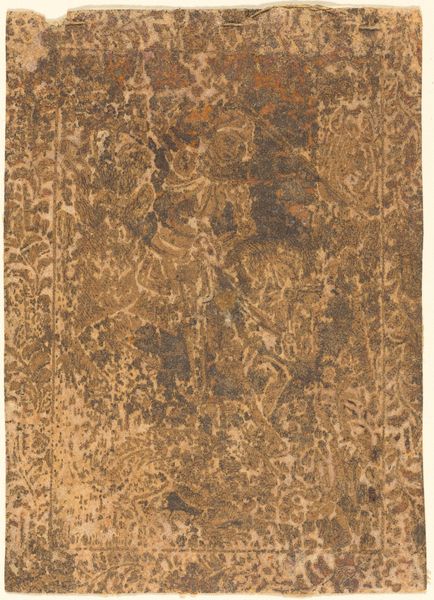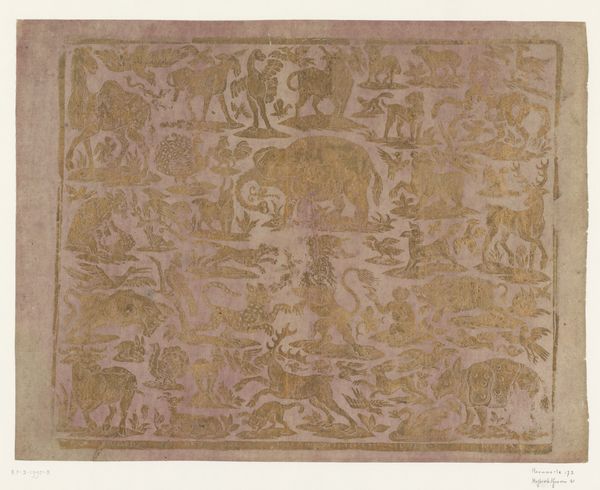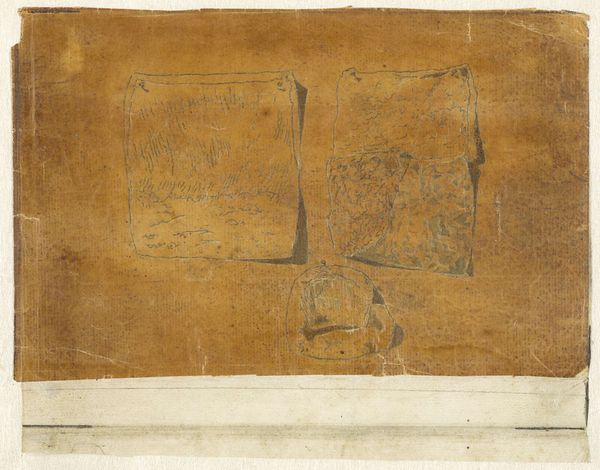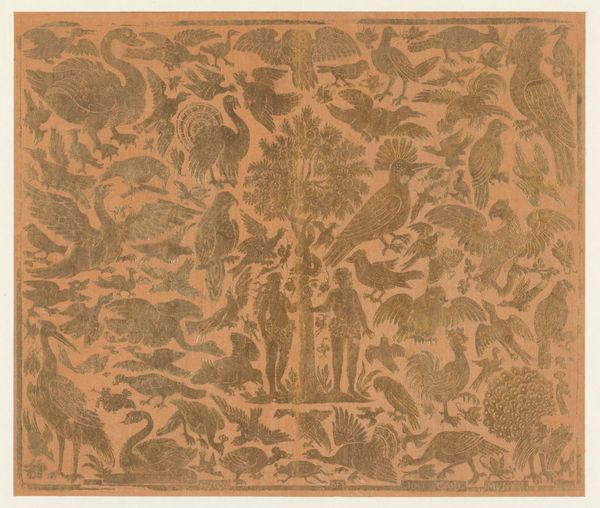
Blad met centraal Adam en Eva onder de appelboom omringd door dieren 1750 - 1794
0:00
0:00
Dimensions: height 320 mm, width 375 mm
Copyright: Rijks Museum: Open Domain
Editor: Here we have a drawing by Johann Carl Munck, likely created between 1750 and 1794, titled "Sheet with central Adam and Eve under the apple tree surrounded by animals," rendered in ink on paper. It’s quite dense with detail! What social or cultural ideas might be explored in this drawing? Curator: The choice of Adam and Eve points to the prominent role of religious narratives in the 18th century, which artists frequently depicted for moral instruction. Note the variety of animals, symbolizing a harmonious world *before* the Fall, but what statement does it make in the Age of Enlightenment, with emerging secular and scientific thought? Editor: That’s an interesting question! Does the detailed rendering suggest something about the intended audience or its reception within the context of, say, courtly baroque culture? Curator: Precisely! The intricacy hints at patronage by a sophisticated audience, possibly within court circles who valued elaborate allegorical works. However, considering this piece, it appears more as a didactic print – do you think this artwork aimed to be privately admired or publicly consumed and reproduced, informing socio-political opinions? Editor: That’s thought-provoking, particularly as prints can easily circulate in society, so it may inform common opinions on religion. I wonder about the contrast between the visual abundance and the narrative's simplicity. Curator: It underlines the persuasive power of images in conveying complex socio-political views of faith! Consider the artist's agency within these social constructs - how do artists of this time navigate these socio-political complexities through their work? Editor: Now, I see it offers commentary on a wide array of influences at that time, like the role of religion, how artwork can inform personal opinion, and how they are made with an intended audience. Thank you for pointing those out! Curator: My pleasure! It is always enlightening to reconsider historical work, to view and understand it under our modern lenses.
Comments
No comments
Be the first to comment and join the conversation on the ultimate creative platform.
